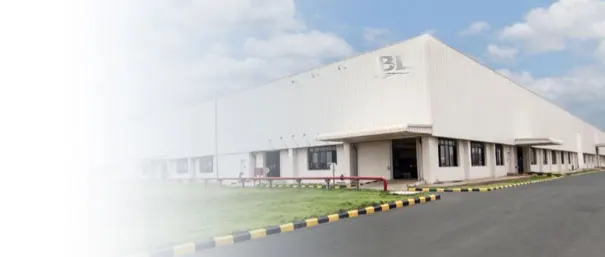ASTM 303 Stainless Steel: Free-Machining Austenitic Grade for High-Precision Components
ASTM 303 stainless steel (UNS S30300) is a sulfur-added modification of 304 grade, specifically engineered to enhance machinability while maintaining the fundamental corrosion resistance and mechanical properties of austenitic stainless steels. With a minimum 17% chromium and 8% nickel content, this grade is widely utilized in automatic screw machines for producing intricate components where tight tolerances and smooth surface finishes are critical. This article explores its chemical composition, mechanical properties, manufacturing considerations, and optimal application scenarios.
1. Chemical Composition (ASTM A582/A473 Standard)
| Element | Content Range | Function |
|---|---|---|
| Carbon (C) | ≤ 0.15% | Balances strength and machinability; higher than 304 for improved chip formation |
| Chromium (Cr) | 17.00 – 19.00% | Forms protective oxide layer; maintains corrosion resistance comparable to 304 |
| Nickel (Ni) | 8.00 – 10.00% | Stabilizes austenitic structure; enhances ductility and low-temperature performance |
| Manganese (Mn) | ≤ 2.00% | Improves hot workability; partially replaces nickel for cost efficiency |
| Silicon (Si) | ≤ 1.00% | Enhances oxidation resistance; aids in deoxidation during melting |
| Phosphorus (P) | ≤ 0.20% | Increased limit improves machinability by forming brittle phosphide inclusions |
| Sulfur (S) | ≥ 0.15% | Key addition for free-machining; forms manganese sulfide inclusions that break chips |
| Selenium (Se) | Optional (0.60% min if added) | Alternative to sulfur for improved machinability in specific applications |
2. Mechanical Properties (Annealed Condition)
- Tensile Strength (σb): ≥ 515 MPa (75 ksi) per ASTM A582
- Yield Strength (σ0.2): ≥ 205 MPa (30 ksi) with excellent elastic recovery
- Elongation (δ): ≥ 35% in 2″ (50mm) – lower than 304 due to sulfur additions
- Hardness (HB): ≤ 217 Brinell (typical 187-217 for machined components)
- Machinability Rating: 150% of B1112 (free-cutting carbon steel standard)
- Shear Strength: 345 MPa (50 ksi) – critical for screw machine operations
3. Manufacturing & Processing Characteristics
- Melting Practice: Electric arc furnace (EAF) with argon-oxygen decarburization (AOD) to precisely control sulfur content (0.15-0.35% range) while minimizing inclusions that could impair corrosion resistance.
- Hot Working: Perform at 1150-1260°C (2100-2300°F); avoid working below 925°C (1700°F) to prevent hot shortness from sulfur segregation. Rapid cooling recommended to maintain structure.
- Cold Working: Limited cold formability due to sulfur additions; maximum 30% reduction before intermediate annealing. Use generous radii in bending operations to prevent cracking.
- Annealing: Solution treat at 1010-1120°C (1850-2050°F) followed by water quenching or rapid air cooling to dissolve chromium carbides and restore corrosion resistance.
- Machining Guidelines: Optimal at 180-240 sfm with high-speed steel tools; use positive rake angles (10-15°) and sharp tool edges. Sulfur inclusions act as chip breakers, enabling high feed rates (0.010-0.020 ipr).
- Surface Finishing: Post-machining passivation (20-30% nitric acid at 50-70°C) recommended to remove embedded iron particles and restore corrosion resistance.
4. Primary Application Sectors
Aerospace Components
Precision fasteners (screws, bolts, nuts), valve stems, and instrument parts where tight tolerances (±0.001″) and vibration resistance are critical. Meets AMS 5640 specifications for aerospace applications.
Medical Devices
Surgical instruments (forceps, hemostats), dental tools, and orthopedic implants. The grade’s machinability enables complex geometries while maintaining biocompatibility per ISO 10993 standards.
Electrical & Electronics
Connector pins, switch components, and precision shafts for consumer electronics. Excellent dimensional stability during high-volume production on CNC Swiss machines.
Automotive Systems
Fuel injection components, sensor housings, and anti-lock braking system (ABS) parts. Resists galling in dynamic assemblies while maintaining corrosion resistance in under-hood environments.
Industrial Equipment
Pump shafts, gear blanks, and spindle components for textile machinery. The grade’s free-machining properties reduce production costs for high-wear parts requiring frequent replacement.
Consumer Products
Watch components, writing instrument parts, and high-end hardware (hinges, locks). Enables intricate engraving and polishing for decorative applications.
5. Comparison with Related Grades
| Grade | Key Alloying Addition | Machinability Rating | Corrosion Resistance | Typical Applications |
|---|---|---|---|---|
| ASTM 303 | Sulfur (0.15% min) | 150% of B1112 | Good (similar to 304 in mild environments) | High-volume machined components, fasteners, shafts |
| ASTM 303Se | Selenium (0.60% min) | 140% of B1112 | Slightly better than 303 in chloride environments | Medical instruments, marine hardware |
| ASTM 304 | Low sulfur (≤0.030%) | 40% of B1112 | Excellent | Food processing, architectural, general fabrication |
| ASTM 316 | Molybdenum (2-3%) | 50% of B1112 | Superior (especially in chloride environments) | Marine, chemical processing, pharmaceutical |
6. Selection Guidelines & Limitations
- Corrosion Considerations: Not recommended for severe corrosion environments (e.g., seawater, acid exposure). Sulfur inclusions create pit initiation sites; use 316 or 304 for critical corrosion applications.
- Welding Restrictions: Poor weldability due to sulfur-induced hot cracking. Avoid welding; if necessary, use ER308L filler and preheat to 200-300°C with post-weld annealing.
- Surface Finish Impact: Sulfur inclusions may cause minor surface imperfections during polishing. Specify “303 + polish” for decorative applications to ensure additional finishing steps.
- Temperature Limits: Continuous service below 425°C (800°F) to prevent sulfur embrittlement. Avoid prolonged exposure to 450-850°C (840-1560°F) range due to sensitization risks.
- Material Certification: Verify sulfur content (0.15-0.35% optimal) and phosphorus levels via mill test reports (MTR) to ensure machinability performance.
- Alternative Grades: For applications requiring both machinability and enhanced corrosion resistance, consider 303Cu (copper-added) or duplex stainless steels like 2205.
7. Request a Stainless Steel Quote
For precision-machined ASTM 303 stainless steel components or customized material solutions, contact Baoli Iron & Steel’s technical team. We provide bar stock (round, hex, square), wire, and near-net-shape preforms with certifications to ASTM A582, A473, and AMS 5640 standards. Our metallurgists can optimize alloy selection for your specific machining requirements.
.content-wrap {
width: 100%;
max-width: 1200px;
margin: 0 auto;
padding: 20px 30px;
font-family: “Arial”, “Helvetica”, sans-serif;
color: #333;
line-height: 1.8;
}
.article-title {
font-size: 28px;
color: #222;
font-weight: 700;
margin: 0 0 30px;
padding-bottom: 15px;
position: relative;
border-bottom: 2px solid #eee;
}
.article-title::after {
content: “”;
position: absolute;
left: 0;
bottom: -2px;
width: 120px;
height: 2px;
background-color: #2c5282;
}
.article-intro {
font-size: 16px;
color: #444;
margin: 0 0 40px;
text-align: justify;
}
.section-title {
font-size: 22px;
color: #2c5282;
font-weight: 600;
margin: 50px 0 25px;
padding-left: 15px;
border-left: 4px solid #2c5282;
}
.table-container {
width: 100%;
overflow-x: auto;
margin: 0 0 30px;
}
.spec-table, .compare-table {
width: 100%;
border-collapse: collapse;
background-color: #fff;
box-shadow: 0 2px 5px rgba(0,0,0,0.05);
}
.spec-table th, .spec-table td,
.compare-table th, .compare-table td {
padding: 12px 15px;
border: 1px solid #eee;
text-align: left;
}
.spec-table th, .compare-table th {
background-color: #f8f9fa;
color: #2c5282;
font-weight: 600;
}
.spec-table tr:hover, .compare-table tr:hover {
background-color: #fafafa;
}
.property-list, .process-list, .precaution-list {
padding-left: 20px;
margin: 0 0 35px;
}
.property-list li, .precaution-list li {
margin: 0 0 12px;
font-size: 15px;
}
.process-list li {
margin: 0 0 18px;
font-size: 15px;
}
.property-list strong, .process-list strong, .precaution-list strong {
color: #2c5282;
}
.application-grid {
display: grid;
grid-template-columns: repeat(auto-fit, minmax(280px, 1fr));
gap: 25px;
margin: 0 0 40px;
}
.application-item {
padding: 20px;
background-color: #fafafa;
border-radius: 6px;
border: 1px solid #eee;
}
.application-item h3 {
font-size: 18px;
color: #2c5282;
margin: 0 0 12px;
font-weight: 600;
}
.application-item p {
font-size: 14px;
color: #555;
margin: 0;
}
.quote-cta-section {
margin: 60px 0 20px;
padding: 30px;
background-color: #f8fafc;
border-radius: 8px;
border: 1px solid #e2e8f0;
}
.quote-cta-content {
max-width: 800px;
margin: 0 auto;
text-align: center;
}
.quote-cta-content p {
font-size: 16px;
color: #475569;
margin: 0 0 30px;
line-height: 1.8;
}
.quote-cta-btn {
display: inline-block;
padding: 12px 35px;
background-color: #2c5282;
color: #fff;
font-size: 16px;
font-weight: 600;
text-decoration: none;
border-radius: 4px;
transition: background-color 0.3s ease;
}
.quote-cta-btn:hover {
background-color: #1e3a8a;
}


